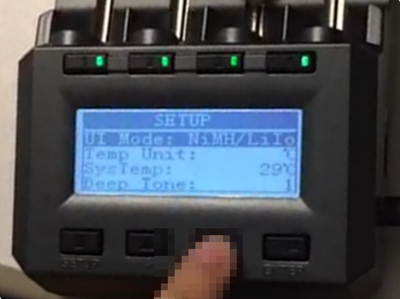Julian Holtz
Enlightened
Double posting...
 Help Support Candle Power Flashlight Forum
Help Support Candle Power Flashlight Forum
... I think this is the best solution within the means of current technology.
Hi Julian, thanks for your inspirational input!Whenever the automatic mode is triggered, the charger must not be able to have any doubt about the cell type inserted.
I think this is the best solution within the means of current technology.

 , that's an easy guess.
, that's an easy guess.Oops, almost missed that one. Hi wolff, Nietcore i4 V2 and Xstar chargers can do it, but Efest LUC V4 and the brand-new Efest Blu6 cannot do it. Like with any hobby charger —the MC3000 has the DNA of a hobby charger— a 0.0V-battery is recognized as "NO BATTERY". The threshold voltage lies around ~0.2V; thereunder the slot does not recognize correctly inserted batteries.a question that arose on another forum:
Can the MC3k reset the undervoltage protection of cells with PCB?
Some chagers can't.
Hi Julian, thanks for your inspirational input!
Well, with the current User Interface structure in mind and with combining Ferdinando's key idea and the feasible out of your input, i'll submit suggestions before Monday which are realistic to be implemented .. fingers crossed that they're convinced to actually do us the favor.
@Dubois -
'Automatic' mode has been implemented! It's similar to the operation of Nitcore i4 V2: If you're fine with 700mA/slot charging, then there's no need to wait, just throw your NiMH/NiCd/Eneloop/LiIon batteries at it and press the ENTER-button already. Inserting LiIo4.35 battery would be okay too, to be charged safely to 4.2V.Hi Kreisl, great to hear that our ideas do not fall on deaf ears!

I question how safely commercial chargers can really detect between NiMH and NiZn automatically. These 2 chemistries should be split up imo for ease of mind and ease of use (KISS, see below).CM2024 user manual said:E.g. at deep discharged NiZn rechargeable batteries, the rechargeable battery chemistry may need to be chosen manually and confirmed with "OK".

Read the manual for Voltcraft Charge Manager 2016 or Voltcraft Charge Manager 2024 and you may be up to a few surprises.There is no charger on the market which can detect between NiMH and NiZn automatically. These 2 chemistries must be split up.
According to the voltage of the inserted battery, NiMH/Cd or NiZn mode is suggested.
I think it can be done safely enough if the charger still monitors for voltage drop while charging, stopping if detected, even when assuming the cell is NiZn, and, conversely, switches to the CC/CV profile when the voltage exceeds that expected from NiMH, even when assuming the cell is of that type. I mean a combined algorithm, safe for both NiZn and NiMH, can be devised. That is not to say I'm asking for it, it really doesn't matter that much for me, although it would certainly be nice to have that.Offline voltages of NiMH/NiZn can overlap as the geman product states:I question how safely commercial chargers can really detect between NiMH and NiZn automatically. These 2 chemistries should be split up imo for ease of mind and ease of use (KISS, see below).